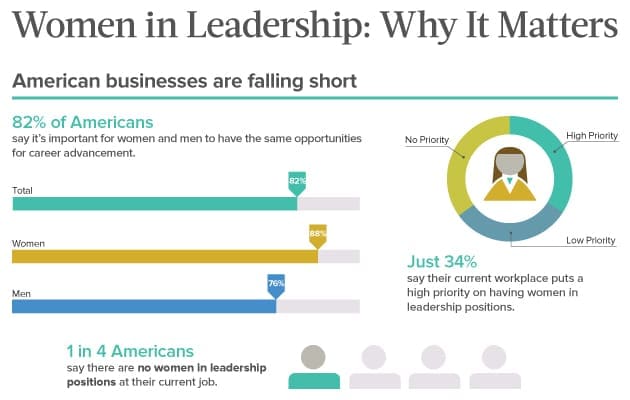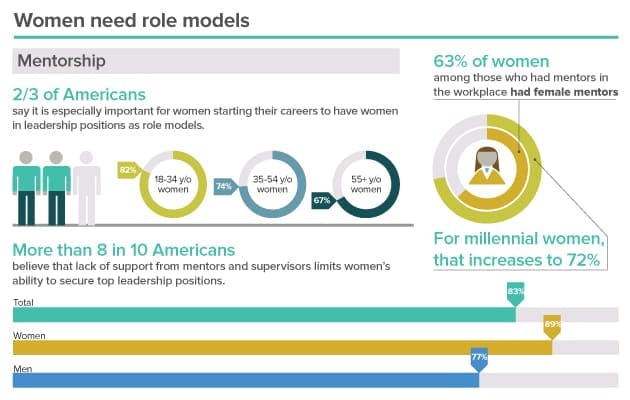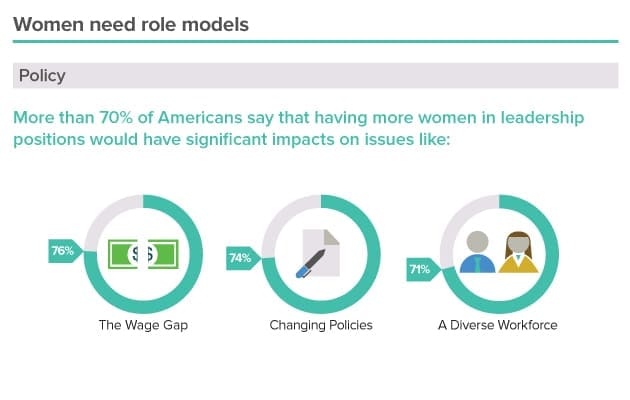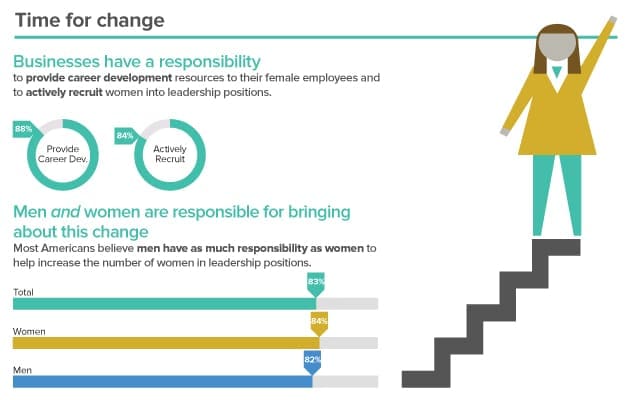
I remember the first time I realized the importance of having women in CEO positions. It was late in the afternoon, and I was leading a meeting of tenured professors at Yale. I was the Chair of the Department and the only tenured woman, and my son Alex was waiting for me to pick him up from preschool. I had been late too many times before; in fact, the teachers had already kindly reminded me they had lives, too. But, what could I do? The meeting was running late. I kept looking at my watch. Finally, heart racing, I announced that the meeting was over. I had to go pick up my son.
The next day one of my male colleagues came into my office. He asked if it would be okay if he left to go to his son’s soccer match. Suddenly my male colleagues felt more liberated and empowered to say they wanted to devote time to their families as well as their careers. That most likely wouldn’t have happened unless a woman had been in charge.
Over my career, I’ve served on dozens of corporate and philanthropic boards, and I’ve been reminded over and over the importance of having women in high-powered positions—and the systemic barriers that have kept women from reaching them. Some reminders were more explicit than others: for example, I served on the board of Catalyst, an incredible organization that looks at the data behind gender equity and women’s advancement in the workplace. So I have both anecdotal but also quantifiable evidence that indicate that it is so important that more women lead companies.
This isn’t an anti-men statement—we need both men and women in the C-suite. But we’re seeing early evidence that when women lead, the policies are indeed different. We see more family-friendly views on childcare, both for men and women. We see more compensation policies that narrow the gender pay gap. And when younger women see women in positions at the top, they are more likely to enter those roles, as well.
We’re also seeing signs that women at the top lead to better stock performance and greater revenue. Based on data from the Bloomberg World Equity Index, the top performing companies, based on stock performance over two years, had the highest ratio of female executives. And according to Catalyst, companies with more women in top roles generate 34 percent greater returns to shareholders.
“Companies with more women in top roles generate 34 percent greater returns to shareholders.”
And yet, despite this evidence, the corporate sector has by far been the hardest sector to crack. In fact, it’s lagging far behind other sectors like philanthropy and academia. There are only 21 women at the helm of Fortune 500 companies—less than 5 percent.
Why is that? Workplace culture is one driver—in fact, 69 percent of people we surveyed said their workplace cultures set an expectation that men will hold leadership positions. When you see the list of 22,000 publicly listed companies, 60 percent of them still have no women on their boards. And because there aren’t any women on these boards, it’s harder to set the policies that enable more women to rise up the ranks. The ironic twist is this: women aren’t asked to be on boards as frequently because they aren’t in CEO positions.
The question is: how do we break those cycles? A part of it is about changing perceptions. In a survey we commissioned, 9 out of 10 Americans think there are more women leading Fortune 500 companies than there really are. One-third think that at least a quarter of these CEOs are women. We have to raise awareness of the problem.
Some of it is about helping women in the corporate sector feel less invisible, to encourage them to speak as much in meetings as their male colleagues without worry that they’ll be labeled as aggressive, or worse. We need to teach young girls that they don’t have to choose between being pretty and popular, and being smart.
But while these interventions are important, we won’t make any progress unless corporations begin practicing and embracing inclusion on a wide-scale. Today, at the Forbes Women Conference in New York City, we launched 100×25, a Rockefeller Foundation-funded campaign to get 100 female CEOs leading Fortune 500 companies by 2025. It’s hugely ambitious—which is why it’s perfectly suited to us as funder. But we can’t do it alone—we need CEOs and their boards to commit to the changes necessary to ensure there is a pipeline of women ready to take on these top jobs.
“We need CEOs and their boards to commit to the changes necessary to ensure there is a pipeline of women ready to take on these top jobs.”
We’re in exciting discussions, and will have specific commitments to announce as the campaign ramps up in the coming weeks. But in the meantime, there are actions all of us can take immediately: write a LinkedIn recommendation for a high-performing woman in your organization or network. Or introduce her to a potential mentor in her field who they might not already know. Message a fabulous woman with an invitation to speak at your next conference.
Together, we can start a movement to transform our companies, but also our economy. When you’re drawing from more experiences and perspectives, whether it’s gender, or race, or sexual orientation, you are fueling the economic engine and creating a more inclusive economy for all. 100 women CEOs won’t fix all of our societal ills. But it will create important signals that as a society are committed to building a more inclusive economy for all. Leave in the comments other ways you think we can reach this 100×25 goal, and how you think it might change the world.





Leave a comment